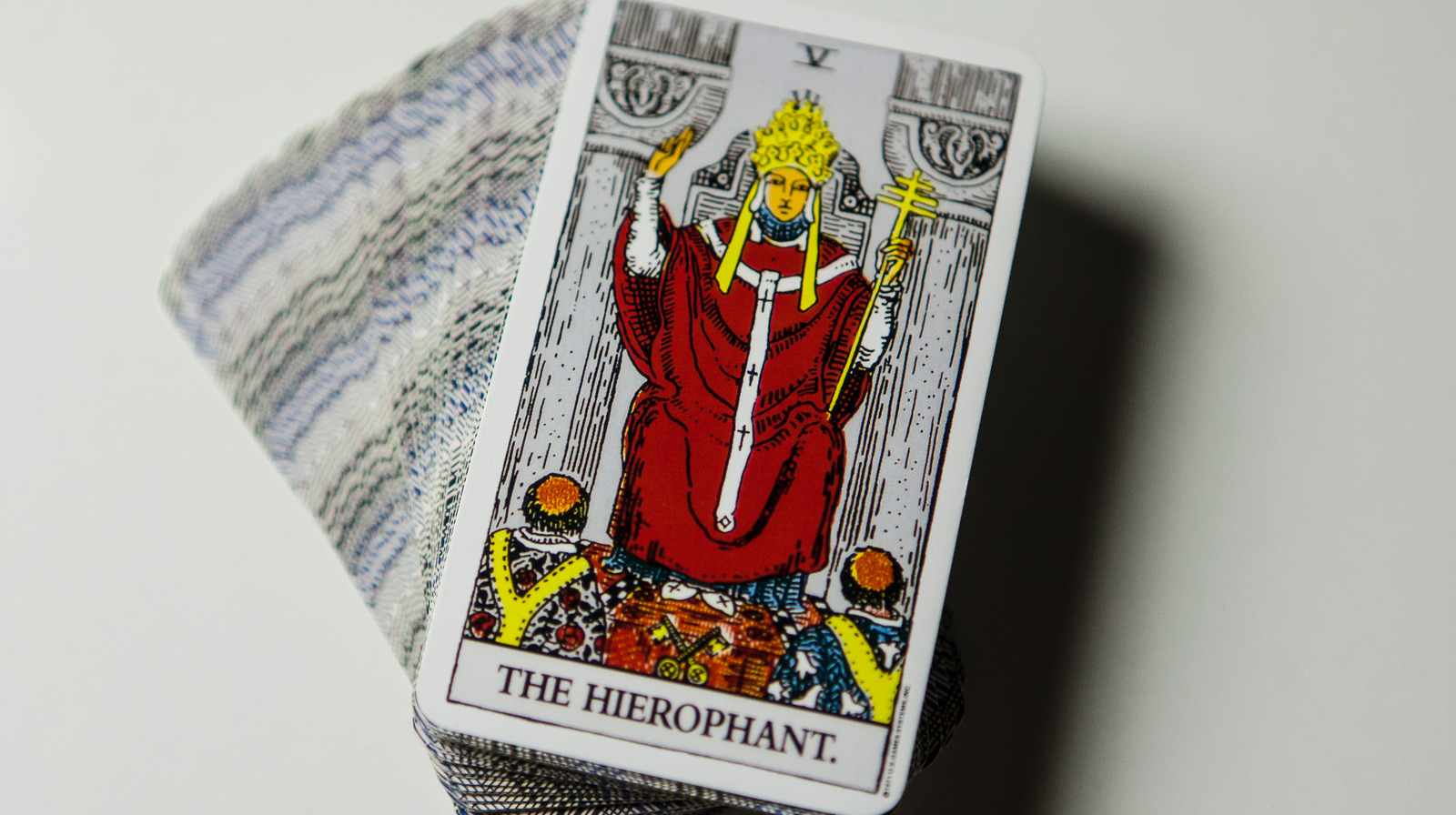The Hierophant tarot card, often cloaked in the rich symbolism of tradition and spirituality, offers profound insights into the realms of wisdom, conformity, and communal belief systems. Seated between the celestial and terrestrial, this card embodies the spiritual guide who interprets the esoteric laws governing life. With a distinctive image often portraying a figure dressed in ecclesiastical garb, flanked by two supplicants, the Hierophant signifies not just personal insight, but a connection to a larger societal framework.
At its core, the Hierophant represents the archetype of the teacher, a bastion of cultural wisdom. This card invites reflection upon our own belief systems and the guiding principles that have been imparted to us from generations past. The Hierophant serves as a reminder that knowledge is not merely an individual pursuit; it is woven into the fabric of the community, and its roots stretch deep into the soil of history and tradition.
When viewed upright, the Hierophant is a powerful emblem of convention and mentorship. He stands as a bridge between the mundane and the sacred, inviting individuals to delve deeper into their spiritual understanding while adhering to the age-old teachings that govern religious and societal norms. The card embodies the pursuit of knowledge through formal education, ritualistic practices, and moral guidelines, positioning itself as a guide for those seeking clarity in a chaotic world.
Conversely, when the card appears reversed, it shifts the narrative towards rebellion against orthodoxy. This positioning suggests a time to break free from societal constraints and challenge the status quo. The reversed Hierophant encourages individuals to carve their own spiritual paths, liberating themselves from the confines of dogma and creating a unique relationship with their beliefs. This duality encapsulates the transformative power of the Hierophant, emphasizing both the necessity of tradition and the importance of personal autonomy.
The journey of understanding the Hierophant extends into the realm of personal development. Those who encounter this card may find themselves in a phase of seeking guidance, whether from a mentor, a trusted advisor, or through the spiritual teachings of a particular faith. This pursuit can lead to revelations that challenge preconceptions and shift perspectives. The Hierophant thus becomes a mirror reflecting the inner thirst for understanding and a deeper connection to universal truths.
Furthermore, the card acts as a conduit for exploring the tension that often exists between tradition and innovation. It raises questions about the value placed on ancestral wisdom in a rapidly changing modern world. In many respects, the Hierophant symbolizes the eternal struggle of maintaining a balance between honoring the old while embracing the new. This dynamic interplay encourages contemplation of how one might incorporate traditional teachings into a contemporary lifestyle without succumbing to the rigidity of the past.
Moreover, from a relational standpoint, the Hierophant invites introspection regarding one’s connections. It suggests the need for open dialogue and shared values among partners, friends, and community members. Are the bonds we forge rooted in mutual respect for each other’s beliefs, or are they merely sidewalk encounters devoid of deeper significance? The Hierophant urges individuals to invest in relationships that honor shared journeys of spiritual growth and mutual encouragement.
Interestingly, the Hierophant also illustrates the significance of rituals and rites of passage. Whether it be through formal ceremonies such as weddings or informal gatherings that foster community bonds, these moments of shared experience embody the essence of the Hierophant. They remind us that, through rituals, we solidify our identities and affirm our beliefs in a tangible way. Each rite becomes a touchstone, serving to ground individuals within a collective narrative that transcends the individual experience.
Furthermore, the imagery encapsulated within the Hierophant card can also be extrapolated to address the fine line between spiritual elevation and institutionalized constraints. The institutions of faith and tradition can provide comfort and guidance, yet they can also cultivate environments of rigidity. Individuals must navigate this landscape with discernment, ensuring they glean wisdom from the past without allowing it to fetter their innate curiosity and quest for personal truth.
As you traverse the landscape illuminated by the Hierophant, consider the card’s call to accountability. This figure does not simply impart knowledge; he instills the responsibility to apply that wisdom judiciously. Each lesson learned from traditions past carries an obligation to integrate those insights into ethical decision-making. The Hierophant’s presence heralds the importance of aligning actions with values and ensuring one’s life choices resonate with a deeper moral compass.
In summary, the Hierophant tarot card functions as a multifaceted beacon of enlightenment, blending the wisdom of tradition with the allure of personal exploration. This archetype encapsulates the dualistic nature of conformity and rebellion, guiding individuals to navigate their spiritual journeys with both reverence for the past and courage to forge new paths. Whether standing in the light of its upright significance or embracing the freedom of its reversed implications, the Hierophant beckons a profound dialogue between individual desire and collective belief, enriching the tapestry of human experience.









Leave a Comment